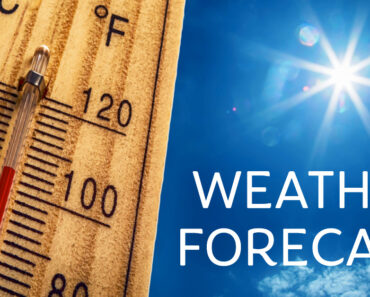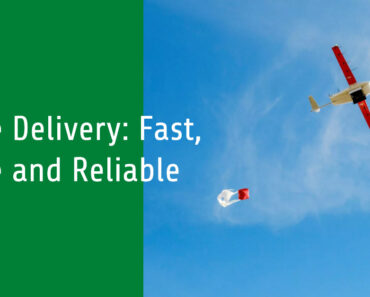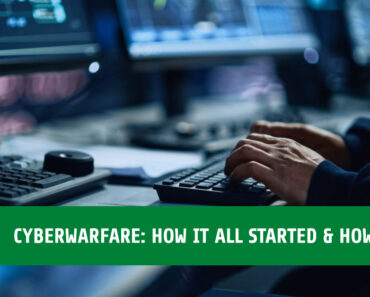The Maersk essec left birth 402 at Los Angeles ports on August 22, 2021, in the early morning. After passing past the breakwater, the ship turned west and began a two-month, seventeen thousand mile, twenty-seven thousand kilometer cruise from America to Asia and back. This applies to the ocean now. Shipping is quite boring. voyage 15 years ago on a very mediocre ship, however the Maersk Essex would have been fantastic. The Essex can hold 13,092 teu 20-foot equivalent units, or 20-foot containers.
The Zen Los Angeles, with 9600 teu capacity, started operation in 2006. Despite the Ever Ace’s first trip, the generation was the largest container ship traveling the oceans in summer 2021.
from Asia to Western Europe, two and a half times larger than the biggest ship a decade and a half ago. It implies one ship could transport all the containers Saint Vincent and the Grenadines got in 2020 and then add Bermuda’s yearly container trade. This tendency toward bigger ships also indicates another key trend in shipping sector consolidation.
The top container shipping companies lately sought a cost advantage by taking use of the industry’s extraordinary economies of scale. something their smaller competitors couldn’t by aggregating a higher amount of containers onto fewer ships. In 2000, the top 10 shipping companies controlled 51% of the worldwide market; now they dominate 86%.
bolstered by historically low ship building costs for Maersk, MSC, Evergreen, and others elected to order these new behemoth ships rather than buy or renovate used ships to operate on their busy Asia to Europe and Asia to Western North America routes, so a 13,000 tu behemoth like the Essex, a record breaker in the wrong year, is now a rather unremarkable workhorse of a ship fixed on a regular route from Los Angeles after an uneventful 10 days traversing the Pacific Cranes unloaded cargo from the Americas, then loaded more east and west. The Essex hauled in its ropes, shoved away from the pier, and cautiously negotiated Tokyo Bay until it reached free sea. Yet, it slowed. rather strategically. In 2008, the early days of the financial crisis, shipping companies faced a perfect storm: low demand and rising fuel prices. Innovation was required.
To survive, Maersk’s working group proposed a simple solution: move slower. Most vehicles and ships are more efficient at slower speeds, but firms were afraid about damaging a ship’s engine by operating it below its specified cruise speed for a long time. quickly waste fuel savings. Maersk debunked this. that many ships were operated at 14–18 knots instead of 22. Most industry benefited financially. 10–25% fuel savings were recorded. during a certain travel became common practice. industry-wide, as the shipping market’s hot lines prefer to deliver and pick up goods. more containers sooner, but when it’s not, it’s a simple method to save expenses and free up capacity. After Yokosuka, the Maersk essec did this. rapid speed reduction.
Slow steaming has been one of the most important industry breakthroughs of the 21st century. The Essex sailed five days to reach the port of Shaman, China, where it rested for 36 hours as hundreds of containers were unloaded in the afternoon of September 8th before setting off again to explore the far east. The ship came closest to its crew’s home nation, the Philippines, in the South China Sea. With minimal labor rules controlling who may work on ships operating in international seas, cost-conscious shipping firms hunt for workers from nations with the lowest cost of living, or those they can pay the least.
The Philippines is the world’s greatest supplier of marine labor due to culture, tradition, and education. 77% of workers are unlicensed. Philippines-born junior seamen assist with physically difficult work. The industry was unaffected by borders. South Korea will build and register a Danish-owned ship. An American will captain it and staff it with seamen from the Philippines, India, Bulgaria, Russia, and beyond the Maersk. At Vangtai, Vietnam, we tied up the Essex.
On September 10, the cranes load and unload the ship, giving most crew members rare free time. The crew is usually permitted to disembark the ship to visit the sights and enjoy some nightlife while unloading. This habit of brief travels to foreign nations has become problematic or impossible because to many countries’ COVET-19 pandemic border regulations, making an already challenging lifestyle much worse. On September 12, after 44 hours in Vietnam, the Essex’s propeller started spinning again. and the team returned to their unending ocean routine. Vietnam now exports shoes, clothes, and textiles.
They’re usually affordable. Cheap shoes take up a lot of room, for instance. but just for $20. Nevertheless, in the US, a corporation may make shoes in Vietnam and ship them to the US for $20 and still make a profit. is a reminder of how cheap ocean shipping was before shipping lines started asking $1,000 to convey a 20-foot container from China to the US. The cost to transfer a shoebox from a port in Vietnam to one in California is around 30 cents, since the 20-foot container can store 3 500.
This is what ocean shipping enables. In today’s manufacturing environment, delivering a shoebox across the globe costs less than a McDonald’s chicken nugget. The Maersk Essex next visited Hong Kong. Kong was adopted at the relatively sim container terminal for 32 hours between September 15th and 16th, then slowly meandered throughout the region, fell anchor for 24 hours, and pushed its way into Yanchan, a port near Shenzhen’s industries with a capacity of 13,092 containers.
It’s not random, naturally. Sophisticated and costly computer systems calculate the best storage arrangement for a voyage. First, there’s the obvious things you want: on this voyage, Yokota containers should be placed on top of shaman containers so one doesn’t have to unload shamans to go to Yokochama ones. The software must then ensure that chilled containers are at a power-supplied location. While other containers must not be in specific positions on this table, those containing potentially leaky items like animal skins must be positioned in an area where the crew can quickly retrieve them while underway.
illustrates the storage standards for hazardous products, including that corrosive materials must be stored at least six meters from radioactive substances and that moist things must be stored. The spacecraft must be generally balanced, and infectious drugs must be stored in a separate compartment. The storage plan is a giant game of 40 Tetris that only a machine can master after 52 hours. Essex travelled overnight. to reach Shaman. where it loaded its final containers for 56 hours. Before the ship’s longest stretch finished shortly before 6 a.m., this was its last chance to fill up on food and gasoline.
After loading, it was time to shuttle another load on September 24th. to North America, the Maersk Essex crossed Taiwan. fought its way across the East China Sea, then navigated the gap between South Korea and Japan after skirting the country’s coast, sailed through the Tsugaru Strait, and into the chilly, wide northern Pacific. After almost two weeks, the Essex left American waters as it cruised towards the Alaskan and Aleutian Islands. On October 6, the ship headed east after passing California’s Channel Islands. stopped, anchored, and sat. On October 7th, it repeated. The 8th and 9th were uneventful.
10th, and the Maersk Essex remained at anchor for 17 days, longer than his trans-Pacific trip. in sight of California’s largest metropolis, awaiting an open birth. The 23rd was the day. Arriving 62 days later was the Maersk Essex.
where it started. Birth 402 in the port of Los Angeles The ports of Los Angeles and Long Beach are technically autonomous, although they share infrastructure like highways and railways.
40% of the country’s container freight is handled by the facility. Ports gain greatly from Asia’s economies of scale, which rarely makes sense. despite the fact that most people reside on the east coast. The Panama Canal’s biggest series of locks can only handle ships up to 14,000 teu. smaller than most modern cargo ships, however transit expenses still exceed hundreds of thousands.
Obtaining a slot and using the canal increases travel time. The west coast offloads most Asian goods. Nonetheless, the US has just five major deepwater container ports on the Pacific: Long Beach, Los Angeles, Oakland, and Tacoma, with Seattle being the biggest metro region on the coast. Because to manpower availability, Long Beach and Los Angeles ports are the busiest. transport, and infrastructure are ports’ most significant considerations. because nobody ships things to do in the Port of Los Angeles—they ship them via it. of Los Angeles, it’s all about rapidly and effectively moving cargo containers from the ship to further conveyance. Nowadays, the port leases cargo terminals to private corporations. For instance, Everport Terminal Services, Phoenix Marine Services, and APM terminals operate facilities.
After docking, containers were removed. That was done. 30–40 containers are unloaded every hour by these enormous cranes. On trucks that bring containers to a temporary storage facility at the terminal, they can be put on a smaller ship or barge that takes them to a neighboring port, although this is unusual in Los Angeles compared to regions like the Pearl River Delta, where there is more water access. They might also be transported. The port’s main benefit is trains’ direct connection to rails, the cheapest form of land transportation. Trucks enter the terminal gates to continue transit from Los Angeles.
hook up and drive a container to its destination. whether that’s across town or nation. So why did the Maersk Essex take 17 days to unload? This system’s broken where? Basically, everything. The system is overloaded, causing the Asia-North America supply chain slowdown. Trans-Pacific shipping demand appears to be rising. 25 percent higher than pre-pandemic baseline. It’s similar to highway congestion. When one lane is closed on a busy four-lane highway, your trip takes more than 25% longer, and stopping and starting takes time, which exponentially slows traffic. Ramp meters keep highways at capacity and flowing freely, so even though it takes longer to get on the highway, each person’s overall journey time is less. Ocean shipping is a system with a capacity, so overloading it by 25 slows it down more than 25. A container is unloaded into a busy terminal. The terminal gates are full of trucks.
to pick up their cargo, which slows down container pickup. which slows a truck’s return to the terminal, reducing the number of trucks available for pick-up. up containers, which causes terminal containers to stack up and leave the port more slowly. Container space is limited. thus making unloading longer. ships, reducing port capacity. Since journey times are longer and ships can’t get back to Asia to pick up a new load as quickly, terminal operators are restricting or prohibiting shippers from sending empty containers back to Asia, leaving Asian shippers struggling to find containers. which means they’re buying new containers, which raises their shipping costs, and then all the supply chain chaos means shippers are sending goods. earlier, which increases demand and supply chain disruption.
It’s a web of chaos that feeds chaos. When disruption hits an industry designed to be extraordinarily standardized, a system so reliant on economies of scale that the world’s largest economy has to rely on five interface points with the world’s largest manufacturing hub, this happens. A perfect system caused many of the 20th century’s revolutions, but it’s also the most vulnerable to disruption. Mars, Essex, remains out there for now. between California and Vietnam, moving more containers.






